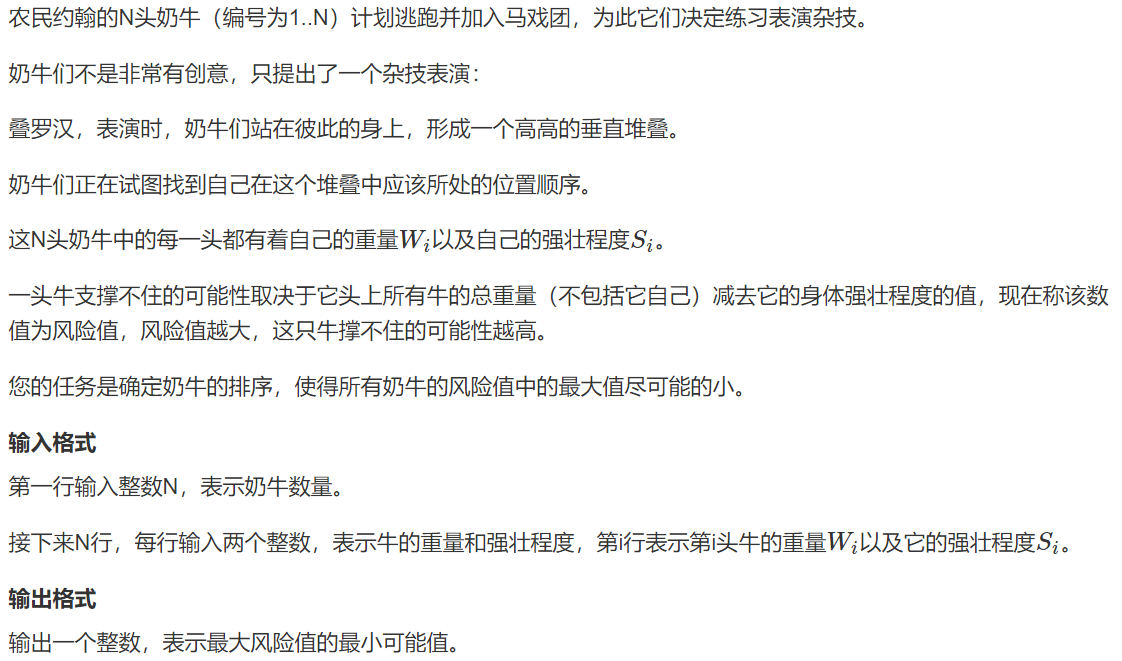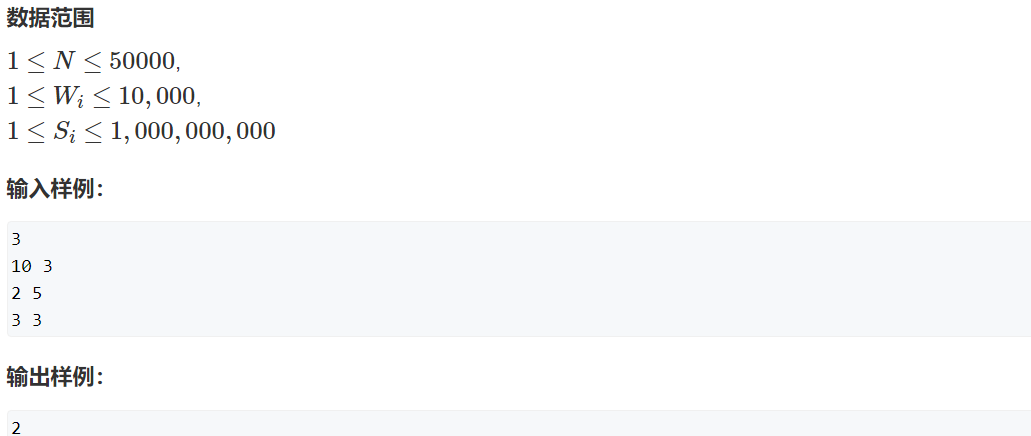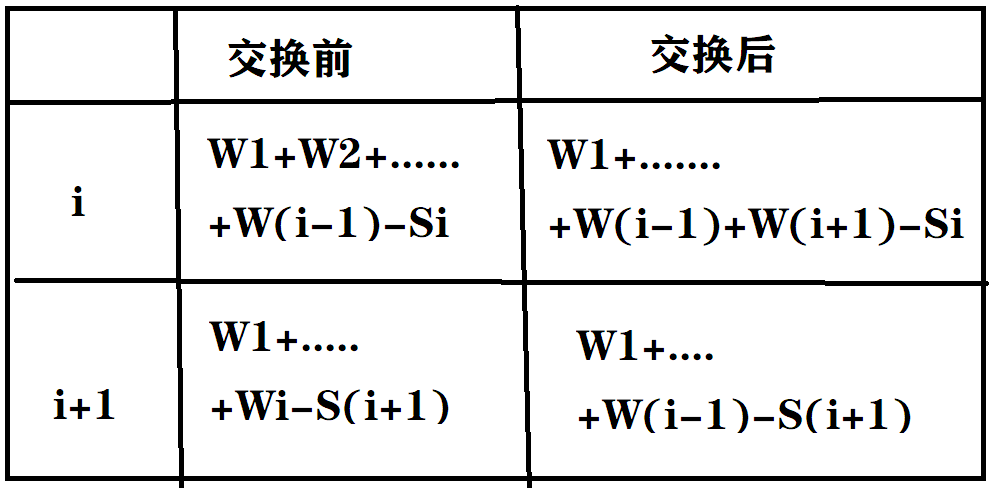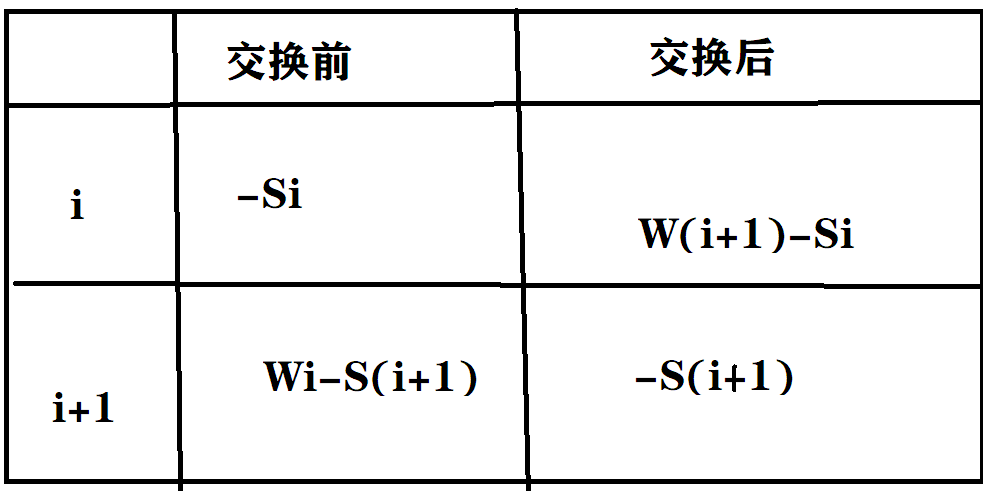地址:https://www.acwing.com/problem/content/description/127/


解析:
看到这种题,很容易想到,w,s的排序方法是关键点。
如果只排其中一个,不好想。
所以从局部出发,考虑交换两个相邻奶牛:
对于 i 牛 和 i+1 牛,我们对它俩进行分析。

发现,每个值都含有:W1+....W(i-1),所以去掉就是:

题目要求:最大风险值的最小可能值
所以我们使某个奶牛的风险值降低是没意义的,降低局部风险最大值才有意义。
假设 Wi-S(i+1)>W(i+1)-Si
变形得:Wi+Si>W(i+1)+S(i+1)
既然Wi-S(i+1)>W(i+1)-Si而且Wi-S(i+1)>-S(i+1)
那么不管交换前的i+1处是否是两者最大值,交换以后,方格里的两个值都会比之前的i+1处小,所以,局部最大值减小了,是一个可行的方式。
根据:Wi+Si>W(i+1)+S(i+1),只要 i 羊的w+s比j羊的w+s大,那么交换它俩,就会使局部最大值减小。
所以排序方式按w+s从小到大即可。
最后统计一遍
#include<cstdio> #include<cstring> #include<vector> #include<set> #include<algorithm> #include<iostream> #include<vector> using namespace std; typedef long long ll; typedef unsigned long long ull; typedef pair<int,int> PII; const int maxn=5e4+10,maxn2=31*maxn;//maxnᱦ struct node { int w,s; }st[maxn]; bool cmp(node a,node b) { return a.s+a.w<b.s+b.w; } int main() { int n; cin>>n; for(int i=1;i<= n;i++) { cin>>st[i].w>>st[i].s; } sort(st+1,st+1+n,cmp); ll maxx=-st[1].s; ll sum=st[1].w; for(int i=2;i<=n;i++) { maxx=max(maxx,sum-st[i].s); sum+=st[i].w; } cout<<maxx<<endl; }